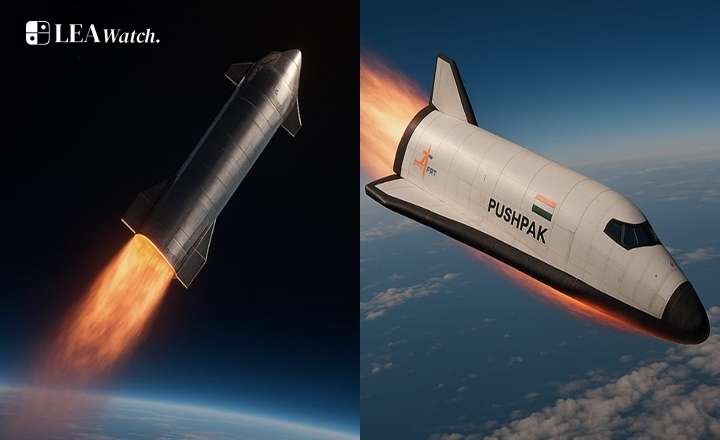SpaceX’s Starship, the world’s heaviest rocket, has completed its 10th successful test flight, marking a breakthrough in reusable launch technology. For the first time, Starship deployed eight dummy satellites into orbit before executing a controlled splashdown in the Indian Ocean. With a payload capacity of 150 tons, it surpasses every existing rocket and demonstrates the potential to drastically reduce launch costs. Analysts note that reusability could cut expenses nearly tenfold, reshaping the economics of satellite constellations, deep-space missions, and commercial space ventures.
For India, this signals both challenge and opportunity. ISRO has already tested its Reusable Launch Vehicle (RLV-TD “Pushpak”), completing three autonomous landing experiments that validated hypersonic re-entry and precision guidance. Work is also underway on the Next Generation Launch Vehicle (NGLV), designed with a recoverable first stage, and a winged Orbital Re-Entry Vehicle (ORV).
The global space economy is projected to cross $500 billion, and leadership will hinge on scalability and sustainability. With its proven cost-efficient PSLV/GSLV systems and ongoing RLV research, India is positioning itself to remain a competitive force in the next phase of space exploration.

